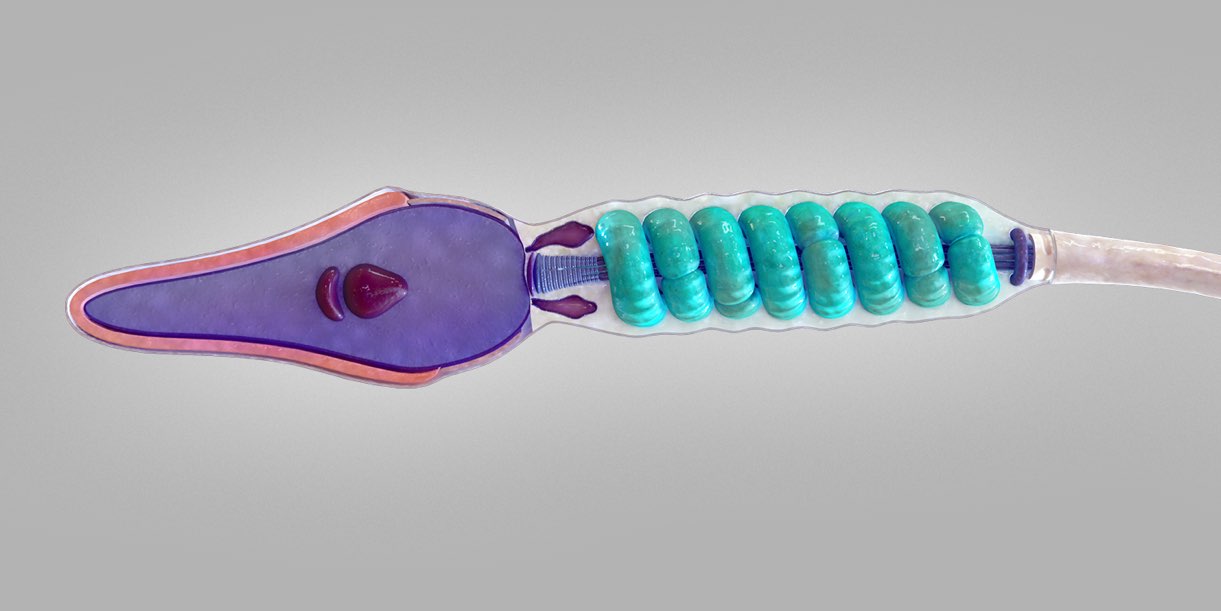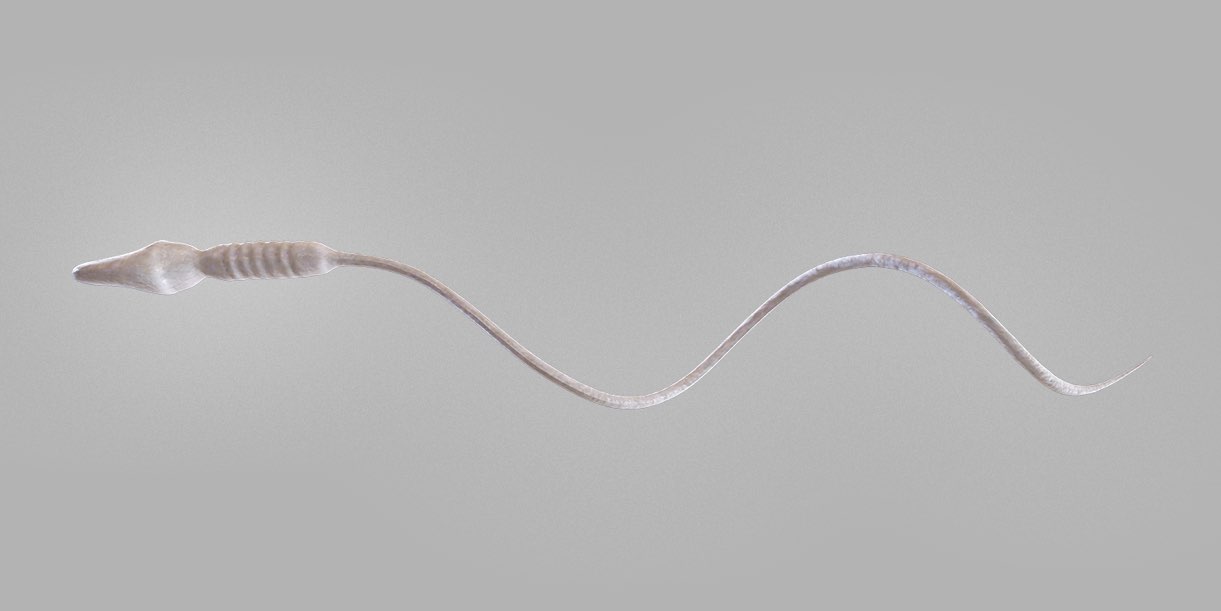
The sperm cell has a lot to overcome. In each ejaculate, less than 1 in a million will actually successfully reach the egg. The journey they take is as challenging as a military obstacle course and any sperm with physical abnormalities are progressively eliminated along the way. This highlights the importance of the sperm cell’s design, and how its structure is vital to its success. ?
A typical sperm cell has 3 regions:
- Head
- Neck
- Tail
The head is the most important; here resides the nucleus which contains all the male genetic material required for the formation of a new organism. This material is the blueprint that determines the characteristics of an individual, as well as determining the sex of the embryo.
Also in this region is the acrosome and the acrosomal cap (the sperm cell’s hard hat).? The acrosome contains a variety of enzymes which are required to carry out what is known as the ‘acrosome reaction’, where the sperm penetrates and fuses with the female egg.
Moving on to the neck — and its main element — the centriole. The centriole plays a role in the development of the embryo after fertilization occurs. It is also important for tail formation and motility.

The tail is comprised of a hairlike bundle of filaments which create an intertwined, patterned appendage to enable movement. When the sperm is within a relatively short distance of the egg, movement is activated and the sperm whips and undulates to travel to the egg. ?
Found in one part of the tail is the mitochondrial sheath. Mitochondria provide energy and are often referred to as the ‘powerhouses of cells’, in this case the energy produced is used by the sperm to carry out movement. ⚡
Despite being the smallest cell in the human body, the sperm cell is a truly incredible machine and its design showcases evolution at its finest. ?
The Sperm Cell is one of many new anatomy models currently in development. Explore the human body from the gross anatomy down to the cellular level with Complete Anatomy 2020.
Try Complete Anatomy for FREE today.
